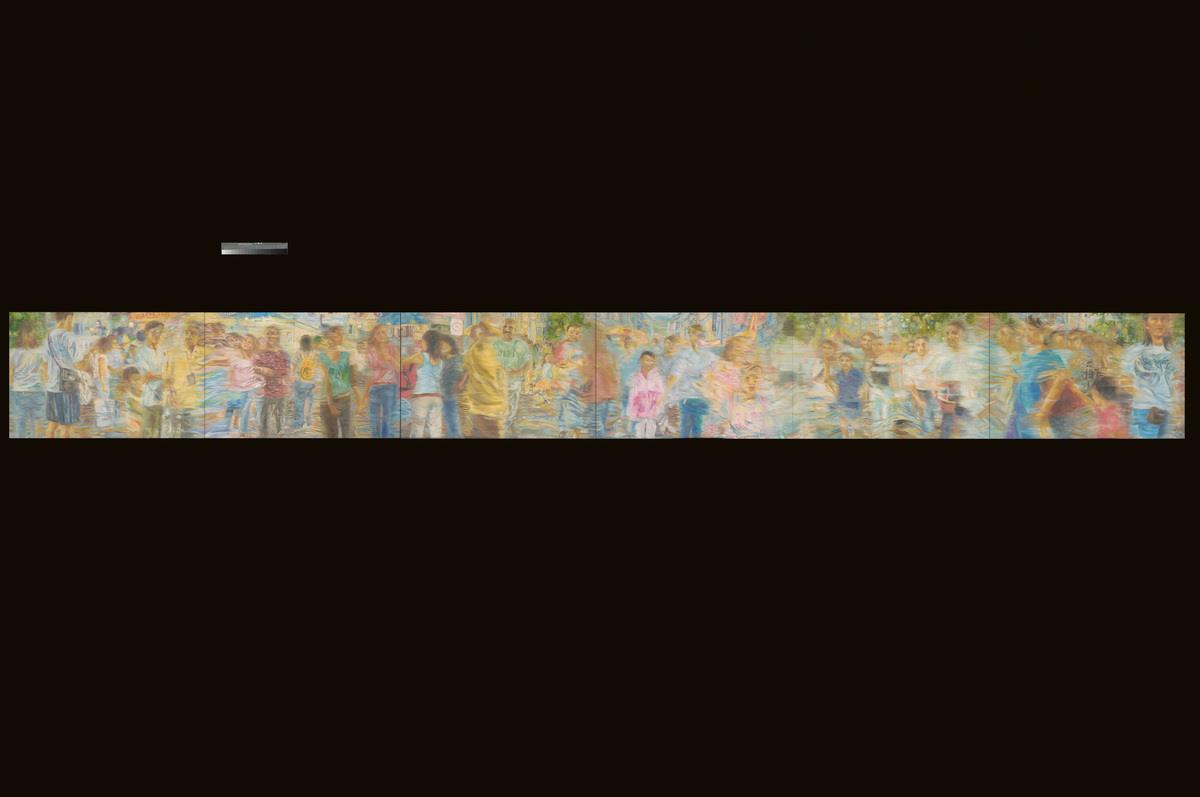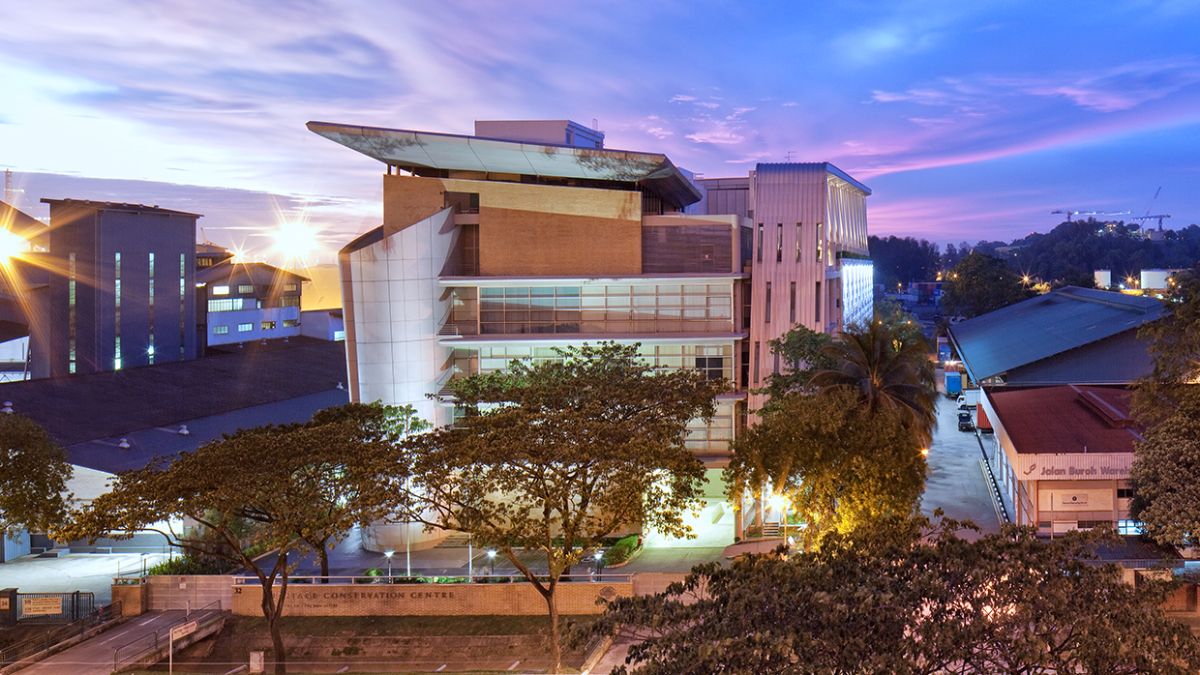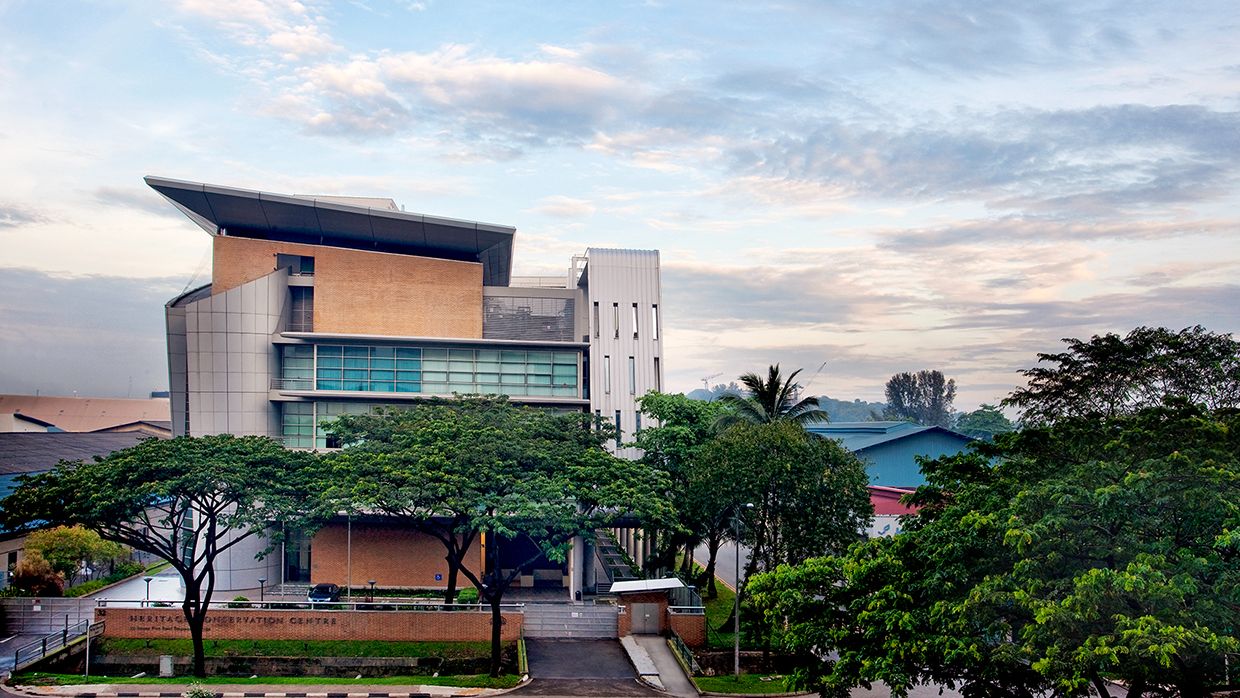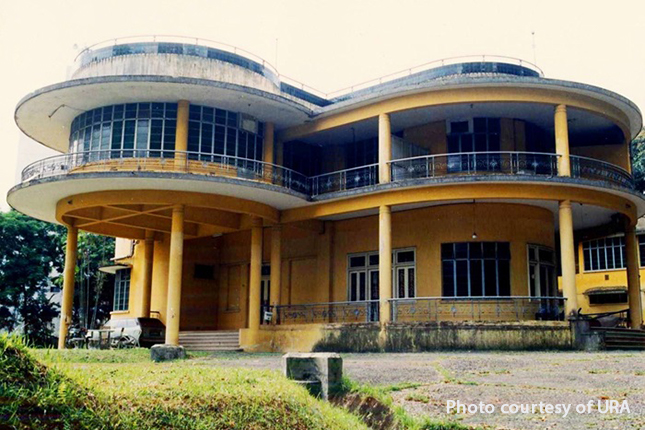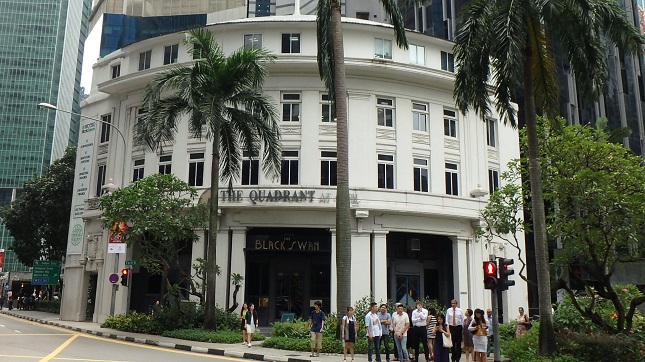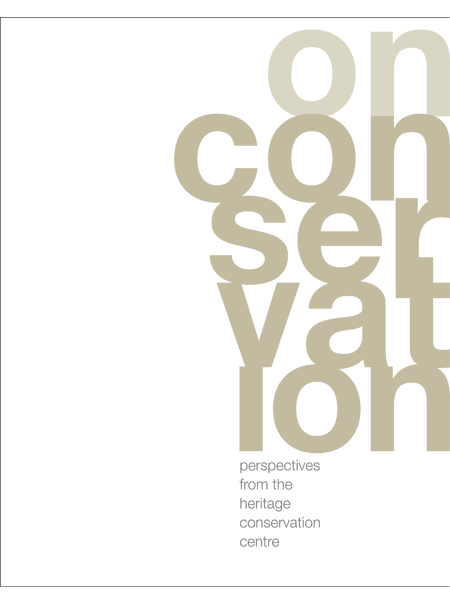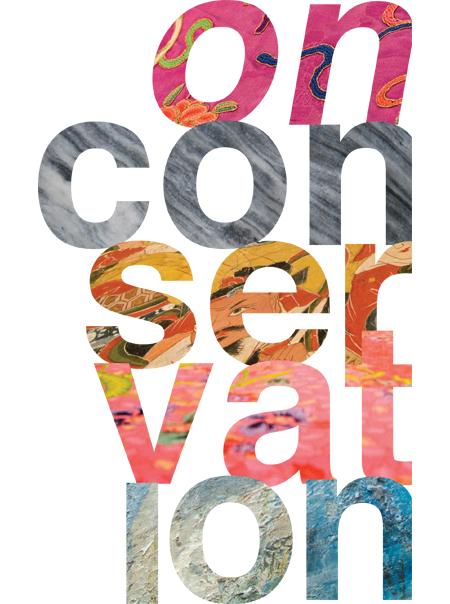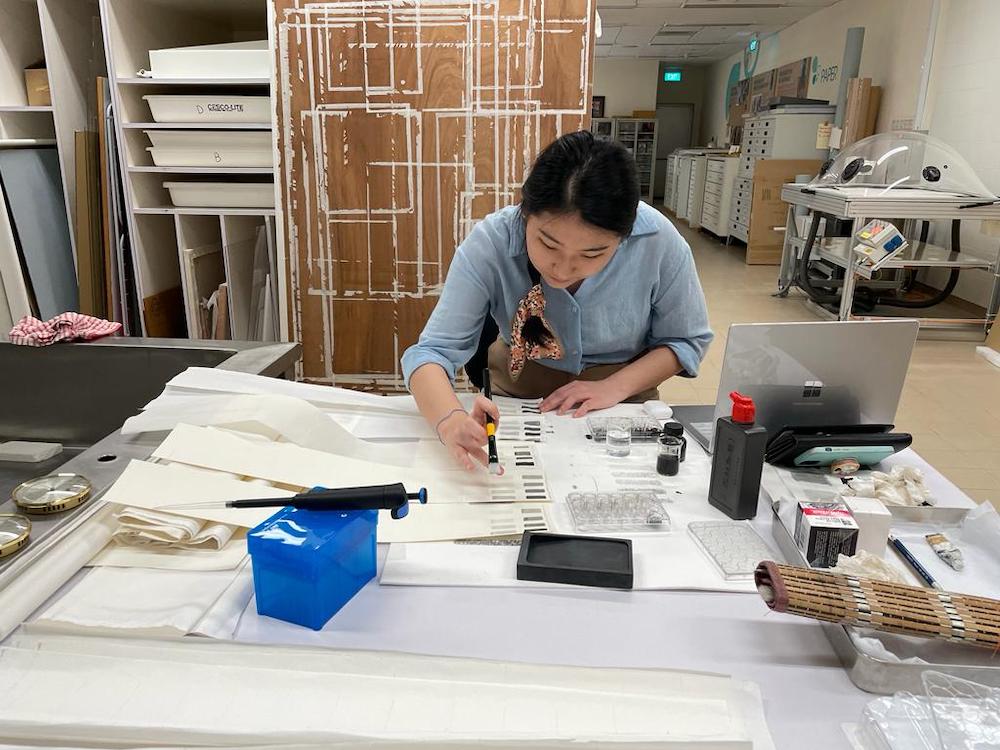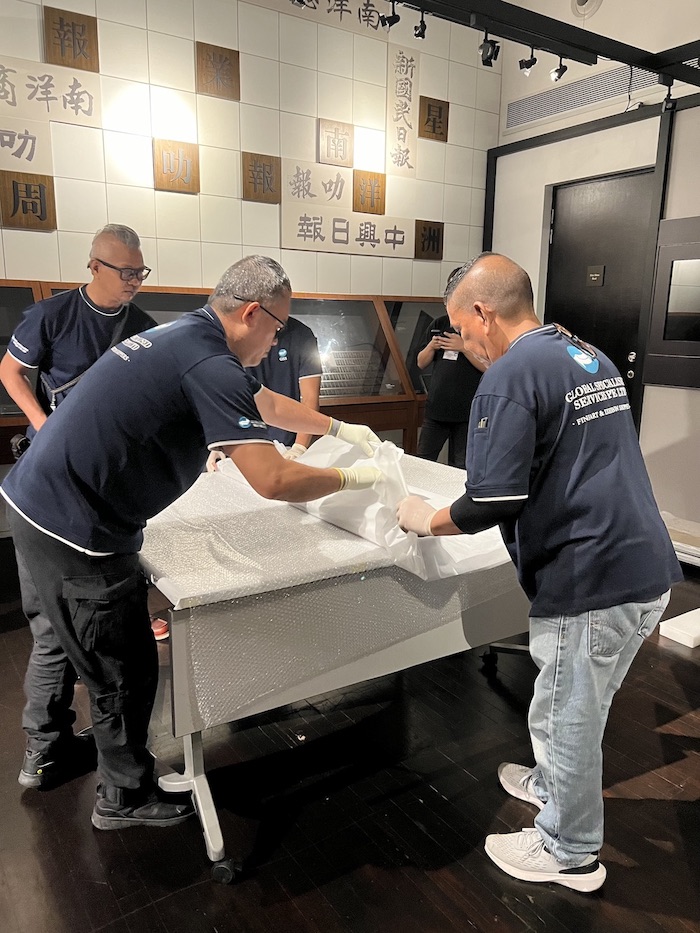Conservation Chronicles is a new quarterly column that features interesting findings by the Heritage Conservation Centre’s Conservation Science Laboratory.
During their work at HCC, conservators sometimes find unknown growths that form naturally on object surfaces as they age. These formations often reveal surprisingly beautiful patterns and structures.
While such "efflorescence" is unintended and usually stems from the artefacts' inherent material composition, our conservation scientists continue to conduct research to better understand the chemical processes behind such growths and find ways to slow down deterioration. The following images are courtesy of HCC Conservation Science Laboratory.
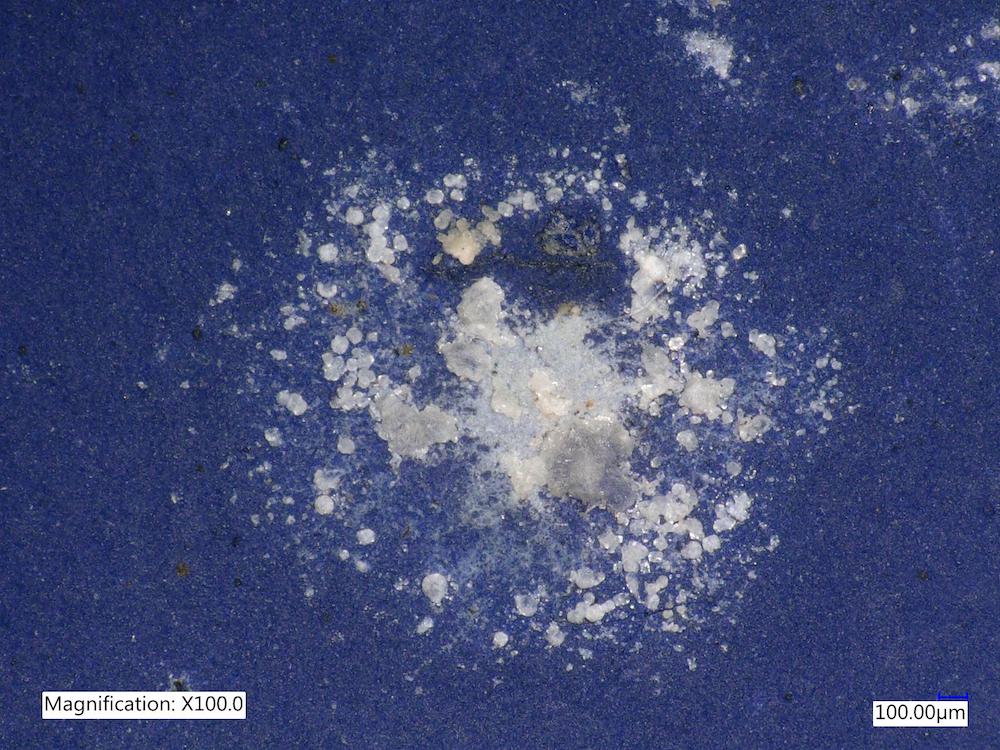
“Metal soap” on a blue silk-print on paper artwork. These spots form when oil-based paint breaks down over time, causing paint delamination and loss and making the artwork look different.
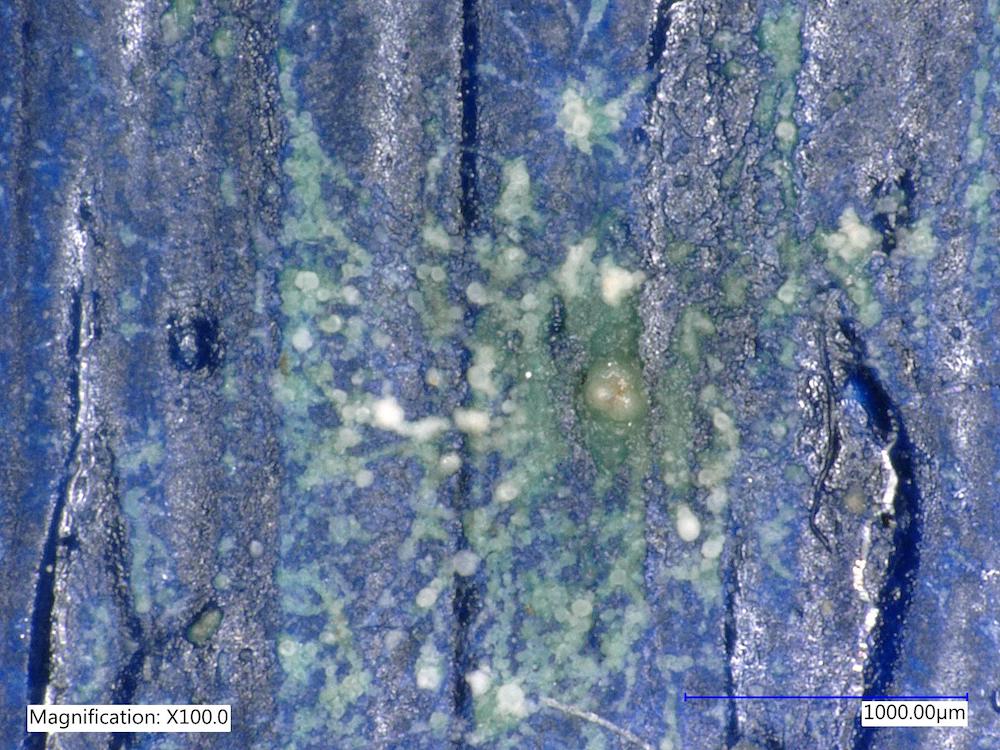
Metal soaps protruding from the surface of an oil painting.
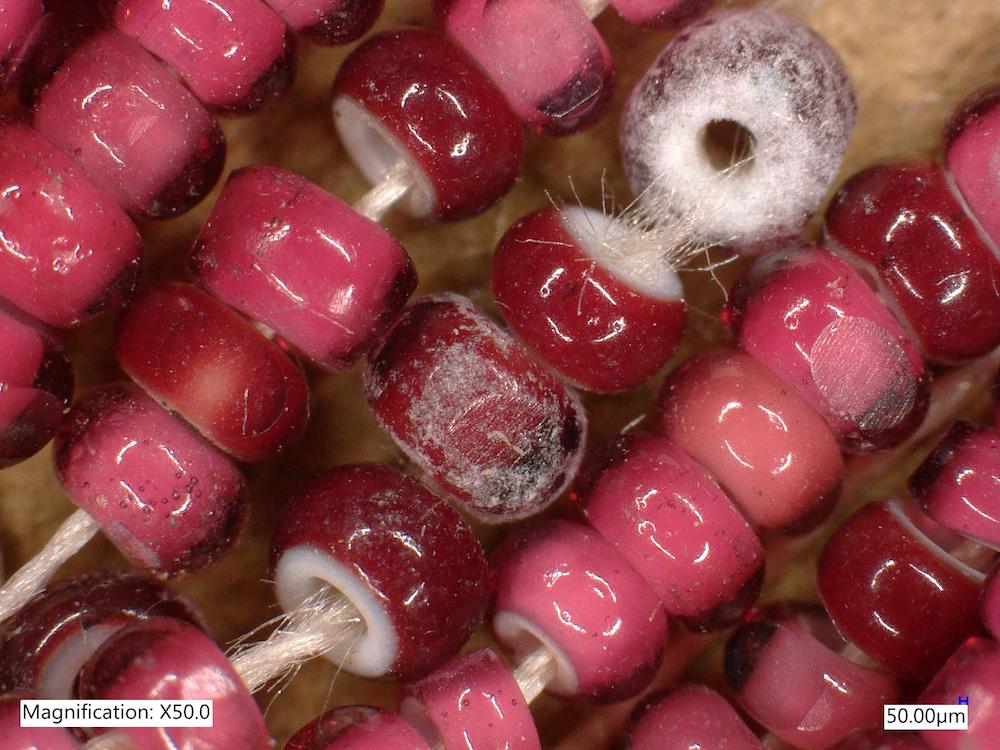
Alkaline salt formation on the surface of glass beads, commonly known as “glass disease”. Salts are formed when ions migrate from within the glass to the surface, causing it to crack and break.
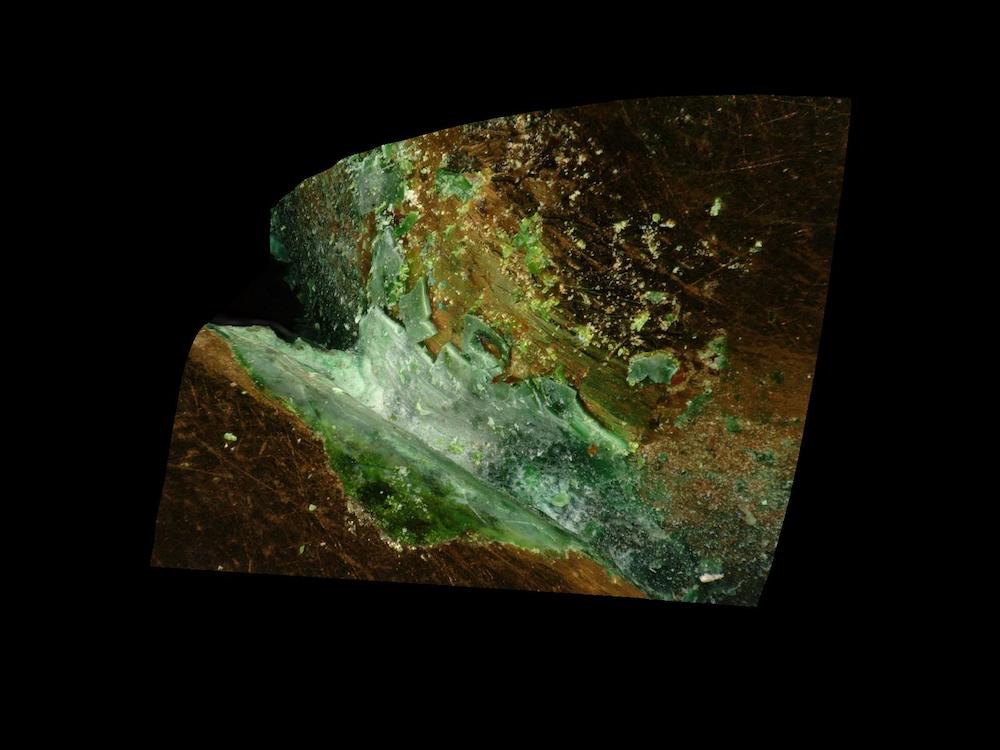
Green corrosion (copper carbonate hydroxides with copper soaps) on the joint of a gold-plated silver bracelet.
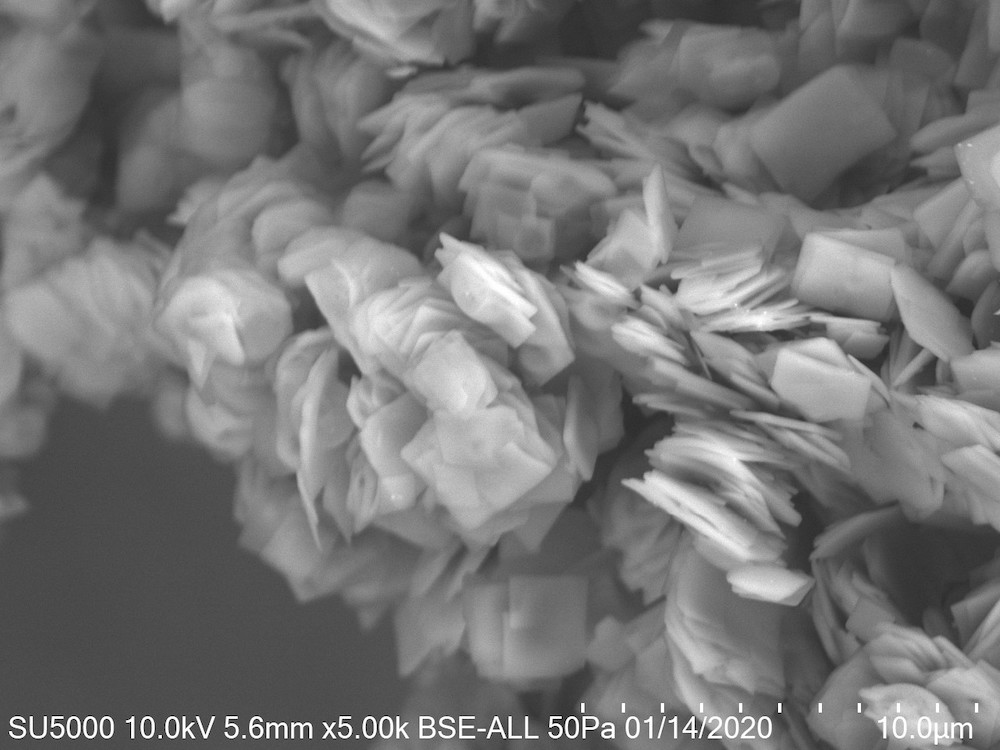
Tiny crystals (sodium copper formate) growing on a Tang dynasty silver flask. When stored in closed spaces, some metals react with gases and moisture, causing these crystal formations.
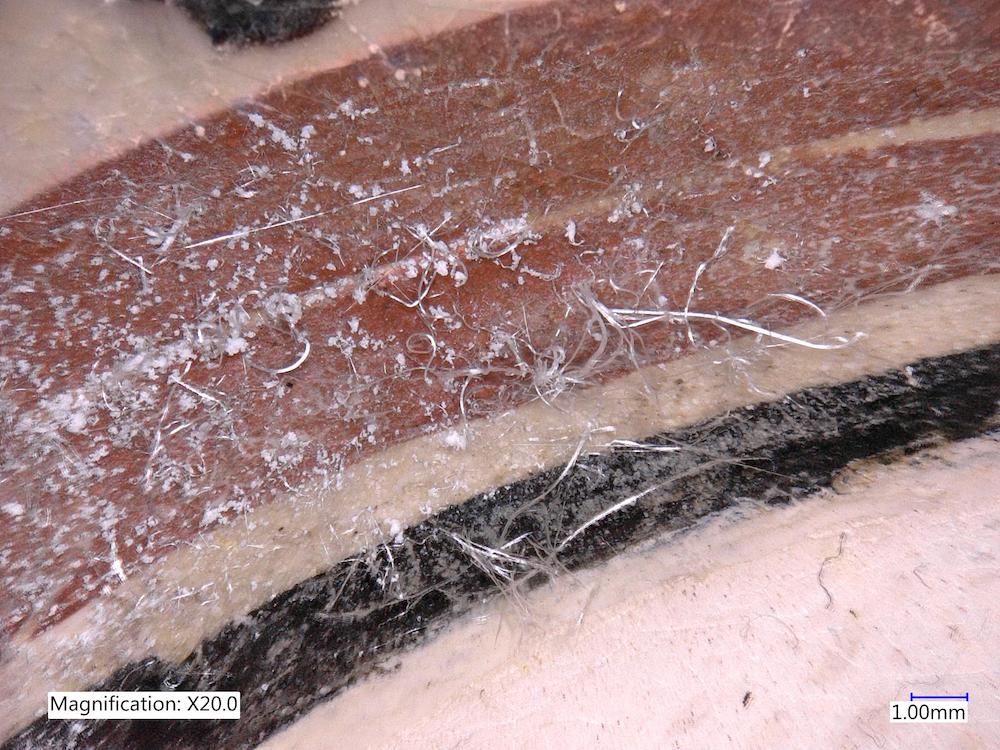
Needle-shaped crystals (Ca2(CH3COO)(HCOO)(NO3)2·4H2O) growing from a painted ceramic bowl.
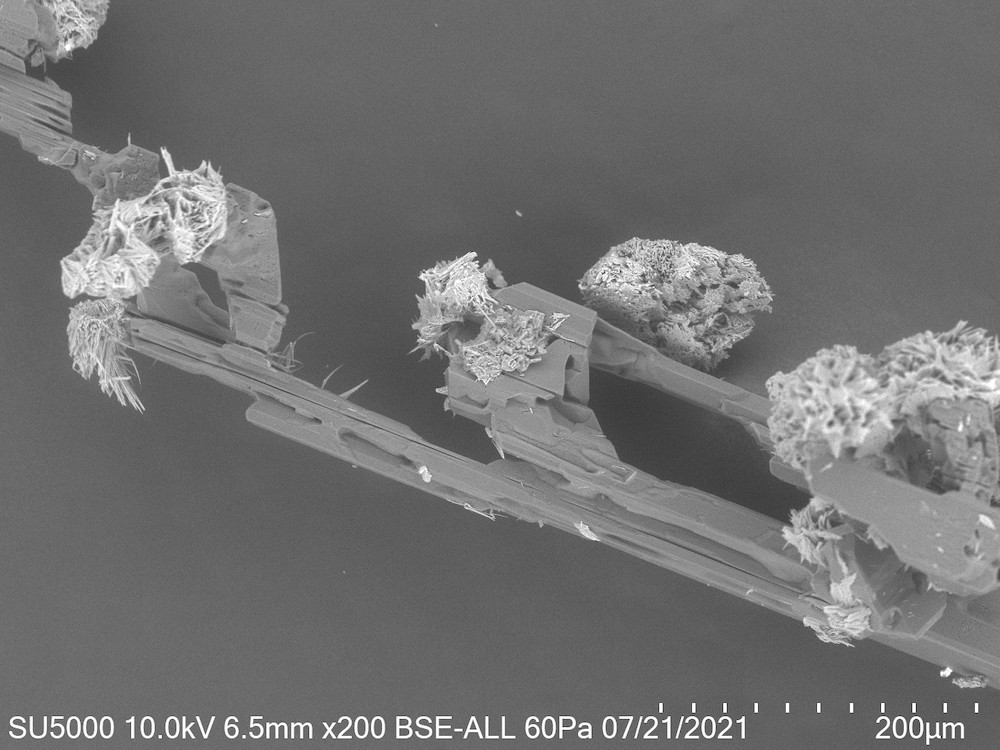
Crystals (sodium salts, calcium sulphate and formate salts) growing on a gold-plated silver bracelet.












